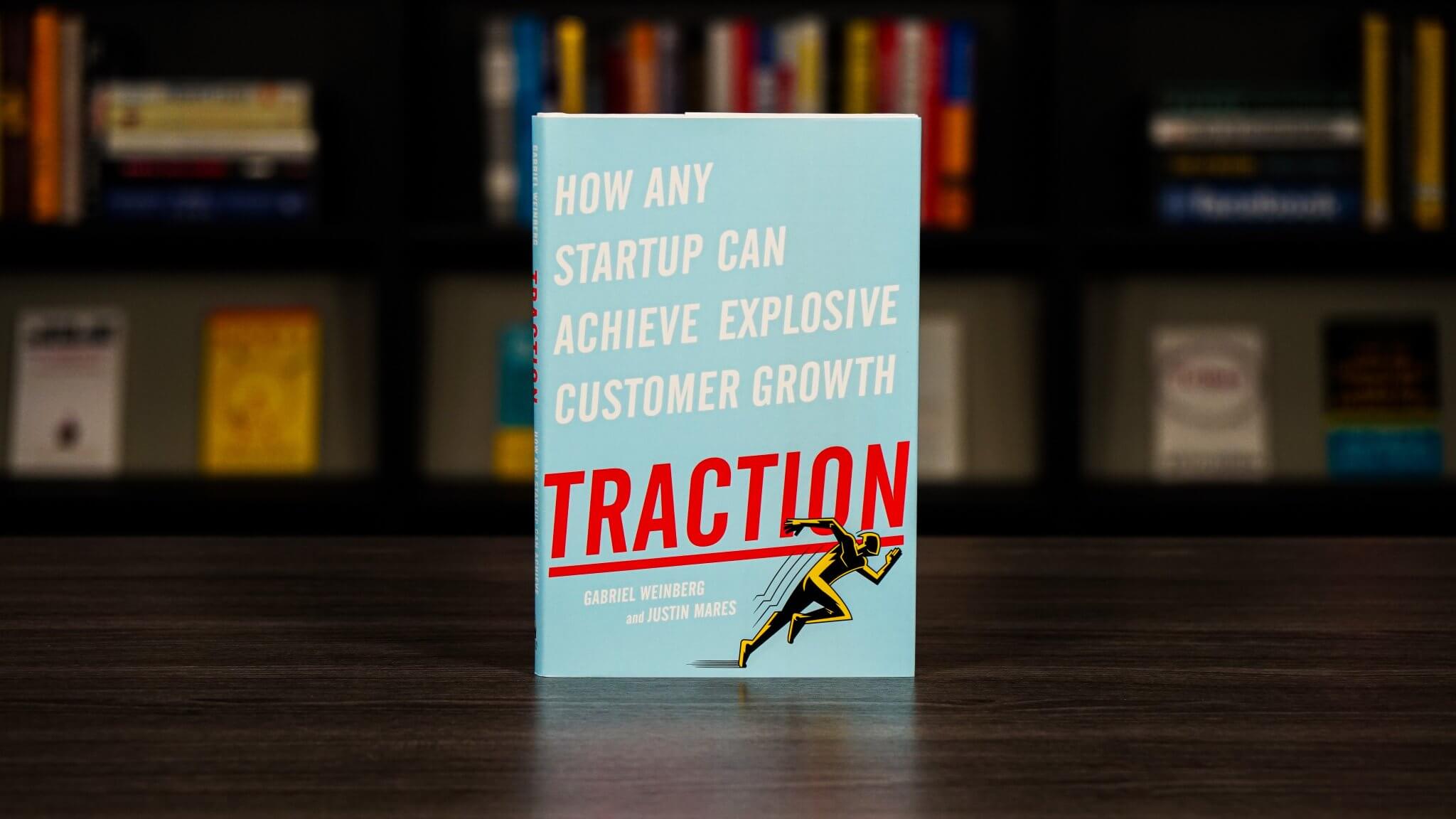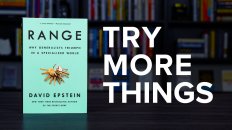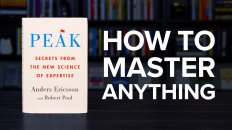Most startups end in failure. Almost all have a product to sell, but most fail because they don’t have enough customers. Traction covers 19 marketing channels for acquiring customers. And it provides clear advice on how to target the best channels for your business.
It’s recommended for marketers, founders, or anyone else interested in attracting customers. It’s especially valuable for teams that are overly focused on product development at the cost of early marketing efforts. The book can help startups develop strategies for attracting customers and ensuring product-market fit.
1. Consider All Nineteen Traction Channels
Traction is a sign that your company is taking off. It’s obvious in your core metrics: If you have a mobile app, your download rate is growing rapidly. If you’re running a subscription service, your monthly revenue is skyrocketing. If you’re operating an organic bakery, your number of transactions is increasing every week.
There are 19 channels for building traction, including: Targeting Blogs, Publicity, Unconventional PR, Search Engine Marketing (SEM), Social and Display Ads, Offline Ads, Search Engine Optimization (SEO), Content Marketing, Email Marketing, Viral Marketing, Engineering as Marketing, Business Development (BD), Sales, Affiliate Programs, Existing Platforms, Trade Shows, Offline Events, Speaking Engagements, and Community Building.
Founders often have a bias towards popular channels or those that they’ve previously used. However, it’s important to seriously consider all 19 channels as each have been effective for all kinds of startups. Often the best opportunities are found in the channels ignored by competitors.
2. Don’t Delay Efforts To Build Traction
There are four common situations where you could successfully build something that people want, but still not end up with a viable business: (1) you can’t figure out a viable business model, (2) there’s just not enough customers to reach profitability, (3) reaching customers is cost prohibitive, and (4) other companies are building a similar product so there’s too much competition.
Building a product or service without a clear way to get traction is a major problem. To solve this, spend your time developing your product and testing traction channels in parallel. Both are of equal importance, so each should get about half of your attention.
Splitting your time evenly between product and traction will slow down product development. However, it won’t slow down the time to get your product successfully to market. In fact, it will speed it up because you can incorporate knowledge from your traction efforts to improve your product faster.
3. Follow The Bullseye Framework
It’s unlikely that you will discover a bunch of equally effective traction channels. Most failed startups can’t even get a single channel to work. If you can find one that works, you can build a great business. The Bullseye Framework helps determine the best traction channel for your business.
Start by brainstorming every single traction channel. Imagine what success would look like in each one, and write it down. Don’t dismiss any channel in this step. Identify at least one compelling strategy for each channel – something that has the potential to move the needle for your business.
Next, run inexpensive traction tests for the 3-5 channels that seem most promising. The tests will help you get rough answers to the following three questions:
- How much will it cost to acquire customers through this channel?
- How many customers are available through this channel?
- Are customers available through this channel a good fit for your business?
Finally, select the channel that tests show will most effectively move the needle for your business. This will be your core traction channel. Start directing all of your traction efforts toward this single channel until you’ve exhausted its potential.
4. Discover & Follow Your Critical Path
You should always have an explicit traction goal that you’re working toward. This could be a thousand paying customers, a hundred new daily customers, or capturing 10 percent of your market. The right goal is dependent on your business. Choose one that aligns with your company strategy.
Once defined, you can work backwards and identify the traction efforts and product features that will accelerate the achievement of your goal. The path to reaching your traction goal with the fewest number of steps is your “critical path”. You should literally enumerate the intermediate steps to get to your goal.
Founders often mess up by focusing their limited resources on things that are off their critical path. Avoid this mistake by ignoring or delaying features that don’t accelerate the achievement of your traction goal.
5. Traction Goals Change At Different Stages
Businesses go through three different phases when it comes to building traction. Phase One is all about getting initial customers to prove that your product can get traction. Phase Two is about getting enough customers that you’re knocking on the door of sustainability. And Phase Three focuses on increasing your earnings, scaling your marketing channels, and creating a truly sustainable business.
Phase One often involves getting traction in ways that don’t scale, including: giving talks, writing guest posts, emailing people you have relationships with, attending conferences, and generally doing whatever you can to get in front of potential customers. You can’t wait for customers to show up. You have to go out and get them in order to build initial momentum.
Growth happens in spurts. Initial growth is usually slow. Then it spikes as you unlock a useful traction channel. Eventually it flattens out again as this strategy gets saturated. Then you unlock another strategy and you get another spike.
Moving the needle in the later stages requires larger and larger numbers. That’s why traction channels like community building and viral marketing can be so powerful: they scale with the size of your user base and potential market.
After The Traction Book Summary

This book summary of Traction covered five valuable insights for attracting customers. However, it’s not meant to be a substitute for reading the book. That’s because the original text provides a much richer and more detailed learning experience.
So if you’re a marketer, founder, or anyone else interested in attracting customers, consider picking up a copy of the book. Traction is available from Amazon and Apple Books.
Are you looking for another great book? Consider checking out the best digital marketing books or the best social media marketing books to find your next great read.


